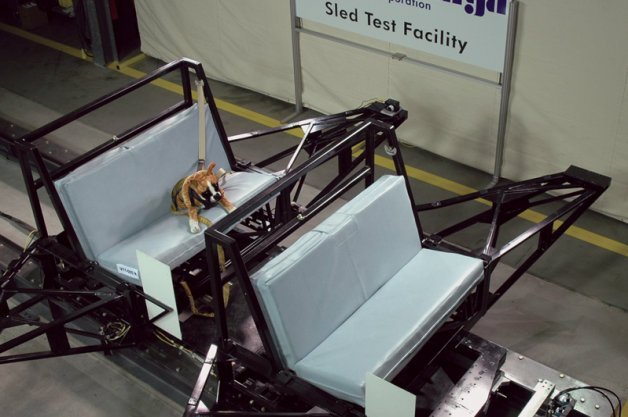Subaru Funds Center For Pet Safety Crash Testing For Dogs

Subaru, a company that portrays itself as pet friendly, hopes to raise awareness on the issue of pet safety by funding initial crash testing by the nonprofit Center for Pet Safety, Automotive News reports.
Real dogs were not used in the crash tests; three dummy dogs representing a 25-pound terrier, a 45-pound border collie and a 75-pound golden retriever were used. There are a variety of devices for sale that are supposed to restrain dogs from entering the front-seat area and distracting the driver - tethers, cages, nets and crates - but their effectiveness in a crash is unknown.
In Subaru's crash test, performed at a Virginia laboratory that tests child seats on a device that speeds down a track and stops abruptly, the results show that devices such as dog tethers are prone to break in a crash, sending the dog rocketing into whatever is in front of it. Rather alarmingly, the organization reports a 100-percent failure rate. In other words, "None of the harnesses were deemed safe enough to protect both the dog and the humans in the event of an accident." Yikes.
Dave Sullivan, the marketing, launch and strategy manager at Subaru of America, says, "We'd like to see something developed over time, but it's not really our job. We're trying to do our best to raise the issue," Automotive News reports. In the end, official crash-testing procedures must be devised by organizations like the National Highway Traffic Safety Administration or Society of Automotive Engineers International, Sullivan says.
See for yourself what happens to a dog in a crash in the video below (viewer discretion advised). And keep in mind that this dummy dog is wearing a tether, which is relatively rare (16 percent of dog owners use them), according to a AAA study in 2011.
Nouvelles connexes


